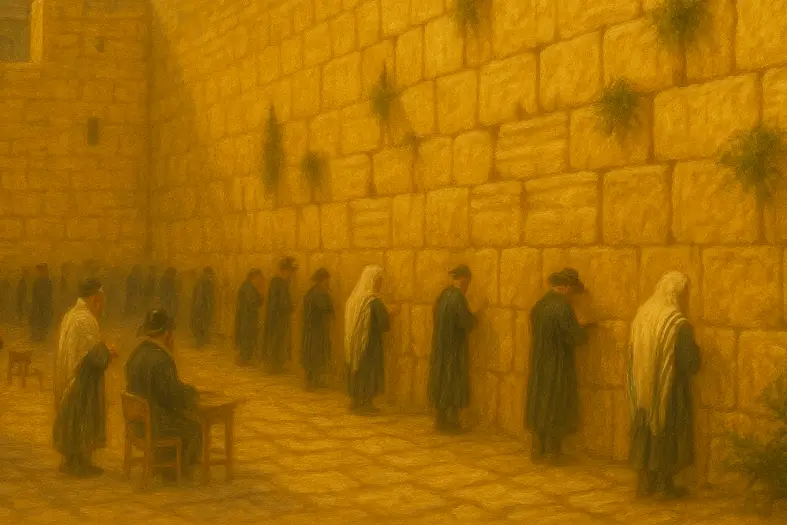


We are commanded to pray to Hashem daily, expressing praise, requests, and thanks as the service of the heart.
The mitzvah of tefillah requires Jews to direct their hearts and words to Hashem daily. Rambam (Hilchot Tefillah 1:1–3) rules that the Torah command is to pray each day, without fixed times or text, offering praise, supplication, and thanksgiving. The Sages later established the fixed Amidah and its daily schedule (Berachot 26b). Sefer HaChinuch (Mitzvah 433) explains that the mitzvah exists to root in us constant dependence on Hashem, fostering humility and gratitude. Talmud (Berachot 6b) describes prayer as standing before the King. Ramban, however, in his gloss to Rambam’s Sefer HaMitzvot (Mitzvah 5), argues that daily prayer is rabbinic, with Biblical prayer only required in times of crisis. Midrash Tanchuma (Eikev 4) underscores that prayer is the soul’s direct dialogue with Hashem, uniting heart and speech.
Commentary & Classical Explanation
Contrast with Shema (Mitzvah 76)
Parallel to Sacrifices
Daily Connection in a Distracted World
Crisis & Personal Prayer
Digital Age of Requests
Prayer as Emotional Health
National Prayer & Unity
High Holidays & Ten Days of Teshuvah
Martyrdom & Last Words


Focuses on the daily act of prayer and connection to Hashem through words, kavana, and structure.
Represents Emunah—the deep, inner trust in Hashem’s presence, oneness, and constant involvement in our lives. This badge symbolizes a heartfelt connection to G-d, rooted in belief even when we cannot see. It is the emotional and spiritual core of many mitzvot.
Signifies awe and reverence toward Hashem—living with awareness of His greatness and presence.
Mitzvot that define and deepen the relationship between a person and their Creator. These include commandments involving belief, prayer, Shabbat, festivals, sacrifices, and personal holiness — expressions of devotion rooted in divine connection.
Mitzvot that strengthen communal life — showing up, participating, supporting, and belonging. Community is where holiness is shared, prayers are multiplied, and responsibility becomes collective.
Represents the concept of spiritual intentionality, purity, and sanctity—set apart for a higher purpose.
Reflects mitzvot rooted in love—of G‑d, others, and the world we are entrusted to uplift.
Pertains to the power of speech—both positive and negative—including lashon hara, vows, and blessings.

Dive into mitzvot, prayer, and Torah study—each section curated to help you learn, reflect, and live with intention. New insights are added regularly, creating an evolving space for spiritual growth.

Explore the 613 mitzvot and uncover the meaning behind each one. Discover practical ways to integrate them into your daily life with insights, sources, and guided reflection.

Learn the structure, depth, and spiritual intent behind Jewish prayer. Dive into morning blessings, Shema, Amidah, and more—with tools to enrich your daily connection.

Each week’s parsha offers timeless wisdom and modern relevance. Explore summaries, key themes, and mitzvah connections to deepen your understanding of the Torah cycle.